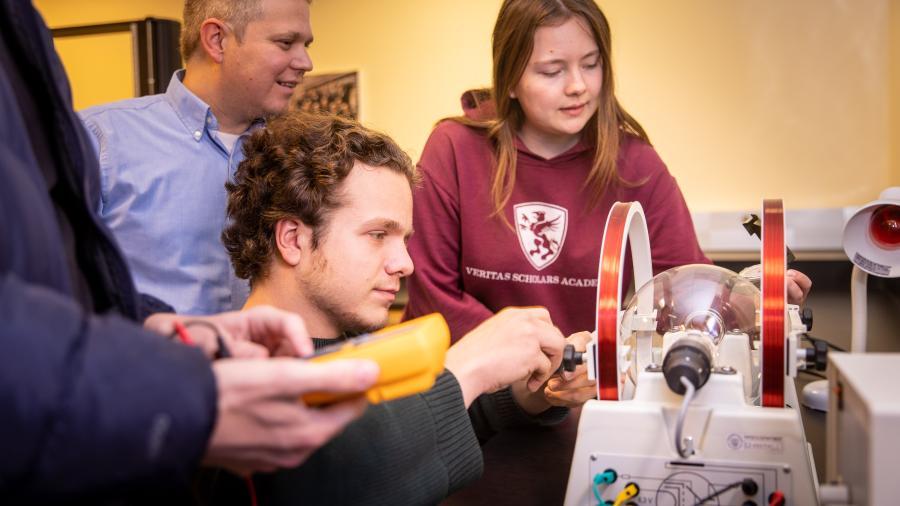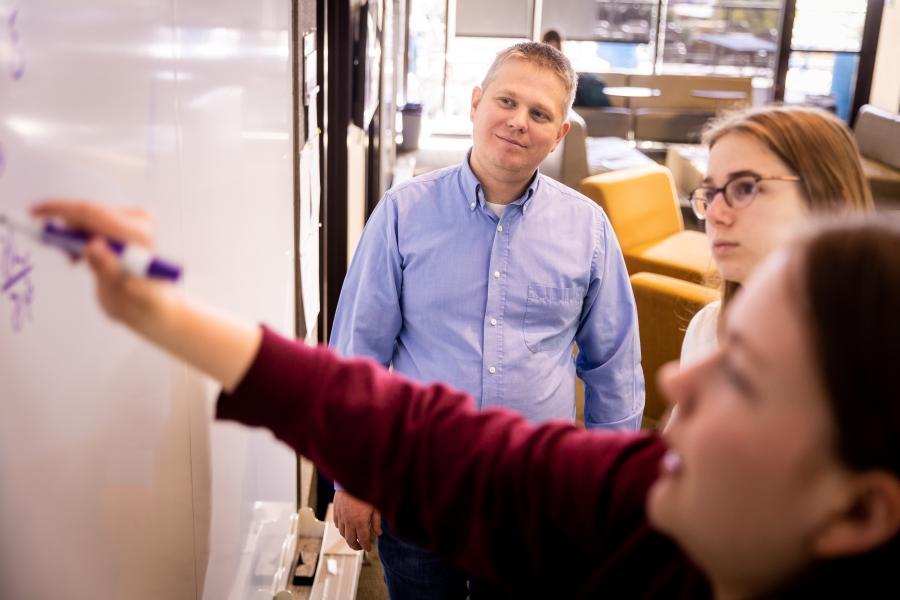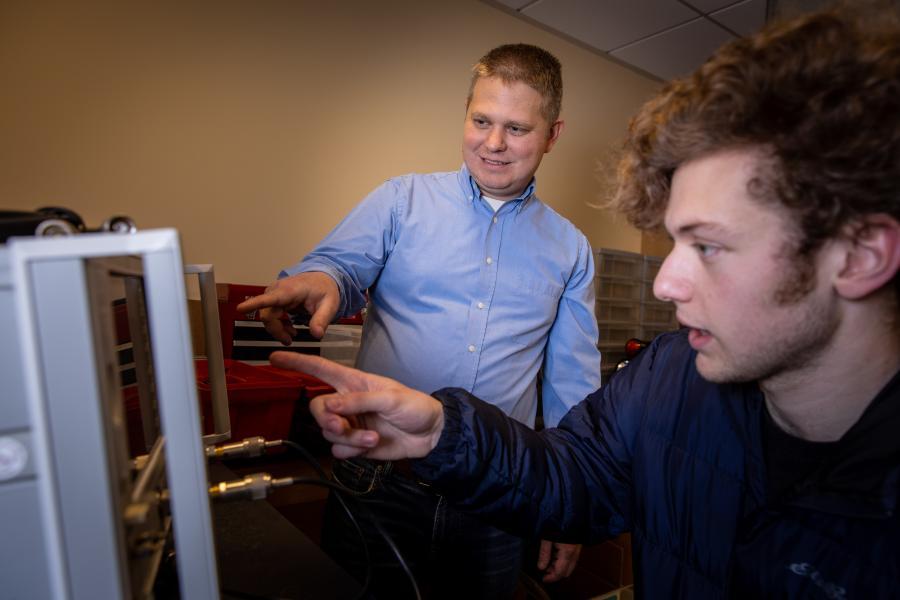Up Close and Personal: Professors Go Beyond Teaching to Mentor and Encourage Students

During his post-doctoral work at the University of Pittsburgh, physics professor Ben Carlson mentored both under-graduate and graduate students. When they asked to work with him in the summer, he looked for suitable projects. “After two summers, I learned what was appropriate and helpful for students,” he says. “Two of my students at Pitt were offered ATLAS papers, which is significant because people in the collaboration — especially undergraduates — don’t necessarily get credit. My students did enough, so their names appear with the collaborators. I enjoyed mentoring them and have continued to work with student researchers at Westmont.”
Carlson received a $200,000 grant from the National Science Foundation for his ongoing study of dark matter with the ATLAS experiment at the Large Hadron Collider (LHC) at CERN, a particle physics laboratory in Geneva, Switzerland.
His Westmont students do work aligned with this research. “I find effective students who can complete a project,” he says Professors working at CERN rarely teach at small colleges such as Westmont, and Carlson happily engages undergraduates in the significant project.
He teaches several physics classes in the department and sees majors frequently. Carlson advises and mentors them in class and in the lab. “Mentoring, advising and researching get bundled together,” he says. “I align some of the work in class with my research so they learn the skills they need to complete tasks during the summer. I systematically teach data carpentry and applied computer science — there’s a steep learning curve for these complex skills. I try to prepare as many students as possible to succeed after they graduate, and I’m working on developing a portfolio for them.”
Carlson took the two students who worked at CERN last summer to a three-day graduate-student training at Stanford in the fall. “This will help them make good progress at CERN this summer,” he says.
“I cast a vision of what physics could be and identify students who want to do it but haven’t thought it through,” he says. “I reach out to students and generate conversation and interest in research. Some students discover they like physics but didn’t initially think of it. The important thing is providing exceptional opportunities for them to do research.”
Chandler Baker ’24 has wanted to be a particle physicist since he was 10. He watched programs about science with his grandparents, and one focused on CERN and the people conducting research there.
“It struck a chord with me, and the goal stuck,” Chandler says. “I was so excited my first year at Westmont when I learned the physics department was hiring an ATLAS collaborator. I took a modern physics class with Dr. Carlson and made it clear I wanted to do research with him. It was a means to an end and a reward in of itself.”
Chandler already had some programming experience. “I was thrown into the deep end when I started doing research,” he says. “My first two semesters, I completed deliverable work that can be cited. I did extrapolation with data no one had done before with a great level of accuracy.”
Chandler will return to CERN this summer and plans to study high-energy particle physics in graduate school. “I’ve got a plethora of really good skills, and I’ve made a lot of connections,” he says. He’s also developed a close connection with Carlson. “It’s much more than a relationship with your academic adviser.”
Sean Ryan ’24 started as a premed major but realized he enjoyed math more than biology and chemistry, so he switched to physics. “That’s when Dr. Carlson invited me to get involved in research,” Sean says. “I hadn’t taken general physics yet, and it was a steep learning curve, especially with my limited programming experience. I enjoyed what I was learning and stuck with it — and did a lot of independent study.”
Sean also went to CERN last summer. “It gave me a huge appreciation for the amount of brain power and will power it takes to run such a big experiment,” he says. “I also felt more connected to the research I’m doing.”
When Sean returns to CERN this summer, he’ll focus on analysis and hopes to make good progress. “It’s great to meet with other people working on the project,” he says.
Sean describes his relationship with Carlson as a mix of personal friendship and a professor-student bond. “I worked with him for a year before I took a class from him,” Sean says. “So I developed a closer connection. He invited our class to his home, and I’ve had lots of interaction with him. I’ve learned from the work ethic I see in him — his dedication to work permeates everything.”
After Westmont, Sean will go to graduate school in physics and may do research full time or possibly teach.
Naomi Siragusa ’24 planned to study psychology and then got interested in education, physics and math. Carlson saw her studying in the physics lounge and said, “Do you want to come and do research with me? I have a project for you that combines education and physics.” Naomi had never met him but decided to work with him to build a cloud chamber for high school students. “Then I realized I wanted to do physics,” she says.
Carlson’s passion for particle physics eventually inspired Naomi to join the ATLAS project. “I’m new to this and just finished basic training in programming,” she says. “I’ll go to CERN this summer and learn from people there to become as good a programmer as I can be. I’m preparing to do analysis this summer.”
She’ll go to graduate school and may do research. But she loves teaching science to fourth- and fifth-grade homeschoolers and may also get a teaching credential. “Girls don’t immediately think they can do physics,” she says. “But if they see me getting a doctorate or a credential in physics, it will encourage them to consider it.”
Last summer, Naomi work as a nanny for Carlson’s family strengthened her relationship with him. “He advocates for students in a way I’ve never experienced before,” she says. “He goes out of his way to help students and give them research opportunities. He goes above and beyond to make sure every student has the skills they need and the opportunities they want.”

